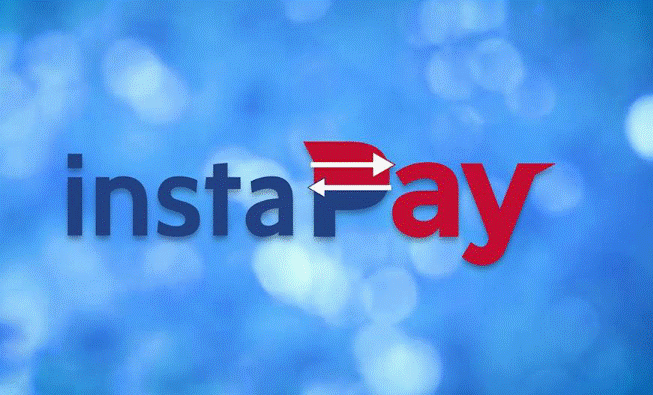By Edielyn Mangol, Reporter
Digital payments have become the heartbeat of everyday transactions in the Philippines, changing how people send, receive, and manage their money. As cashless exchanges become the norm, choosing the right transfer method has never been more important — or more complex.
Two major players now dominate the scene: PESONet and InstaPay. With banks like BPI introducing ₱10 InstaPay fees alongside the promise of lightning-fast transfers, and PESONet steadily improving its reliability for larger sums, the choice isn’t as clear-cut as it once was. This article provides a quick guide to help you decide when to use either of the two.

As digital payments continue to dominate exchanges in the Philippines, many consumers find themselves deciding between PESONet and InstaPay whenever they send or receive funds. BPI’s ₱10 InstaPay fee, combined with speed promises and evolving reliability, makes this choice more nuanced than ever. Whether you’re sending ₱500 for lunch or ₱50,000 for business, understanding the PESOnet vs. InstaPay difference in 2025 is key to smarter transfers.
What are PESONet and InstaPay?
PESONet and InstaPay are the two main retail credit transfer systems overseen by the Bangko Sentral ng Pilipinas (BSP), serving as critical infrastructure for the country’s digital payment ecosystem.
InstaPay is specifically designed to facilitate real-time payments, allowing users to send and receive low-value money transfers almost instantly. This service operates 24/7, including weekends and holidays, making it highly convenient for consumers and businesses alike who need quick access to funds. Because of its immediate processing, InstaPay is ideal for everyday transactions such as paying bills, sending remittances, or transferring money between personal accounts.

On the other hand, PESONet functions through a batch processing system. Instead of immediate settlement, it groups transactions and processes them during designated settlement windows, usually outside of peak banking hours. Due to this setup, payments made via PESONet may not reflect instantly; depending on the timing, funds are typically credited either later the same banking day or on the next business day if transactions occur past cut-off times. PESONet is generally used for higher-value transfers where speed is less critical, such as payroll distribution, corporate payments, or settling invoices.

Both PESONet and InstaPay play a crucial role in the Philippines’ push for digital financial inclusion. By offering varied options suited for different transaction needs, these systems reduce the reliance on bulky cash dealings and traditional paper-based methods. This enhances convenience, security, and transparency for all users while supporting the government’s broader efforts to promote a cash-lite society and empower Filipinos through accessible digital financial services.
Speed: How fast is “fast”?
InstaPay offers near-instantaneous fund transfers. Send money at any hour, and the recipient gets it within seconds, which is critical when urgency matters—think paying for emergencies, immediate bills, or small errands.
PESONet’s speed, while improved over past years, follows scheduled cut-off deadlines. If you initiate a PESONet transfer before the bank’s established cut-off (often in the mid-afternoon), it can clear the same day. Past that time, you’ll have to wait until the next banking day.
Example:
- If you send ₱500 via InstaPay at 9PM, your friend likely receives it immediately.
- If you send ₱50,000 via PESONet at 4PM, after most cut-offs, it may only post the following business day.
Cost: What does it cost you?
In 2025, BPI charges ₱10 per InstaPay transaction. Across banks the fee tends to range between ₱8-₱15, but ₱10 has become a standard that many consumers expect. PESONet fees vary more: many banks offer free PESONet transfers for larger or scheduled payments, or charge a small fee that is negligible relative to the amount being transferred.
Example:
- Sending ₱500 via InstaPay: the fee of ₱10 is about 2% of the amount. For small transfers, that’s not trivial — but often worth it for the speed.
- Sending ₱50,000 via PESONet: even if there’s a small fee or none, the relative cost is tiny compared to the move itself. InstaPay would still cost you ₱10, but PESONet likely ends up being more cost-efficient for that scale.
Reliability: Which one holds up better?

Reliability has been improving for both rails. Banking News in recent months has reported that banks, under BSP oversight, are enhancing system uptime, reducing delays, and improving customer support for both InstaPay and PESONet. InstaPay’s instantaneous nature means that any outage or technical issue becomes visible immediately, which can hurt trust during peak transaction times. PESONet, because of its batching, tends to be less exposed to transactional spikes; however, delays past cut-off, or weekends, still factor in.
Consumers should check their bank’s disclosure of cut-off times, weekend/holiday processing, and whether there are known service interruption reports. These affect how “reliable” the service feels from a user perspective, not just on paper.
Convenience: Everyday payment vs. big payments
For everyday payment transactions — sending money to family, paying utilities, topping up wallets, splitting bills — InstaPay is clearly more convenient. You don’t have to worry about bank hours, cut-offs, or whether the recipient must wait.

For larger or scheduled payments — rent, salary, supplier payments — PESONet often makes more sense: less pressure on timing, lower fee burden proportional to amount, and in many cases, more transparent policy for high-value movements.
PESONet vs. InstaPay: Which one should you use?

Putting together speed, cost, reliability, and convenience, here’s a practical guide:
| Situation | Amount | Recommended Choice | Reason |
|---|---|---|---|
| Paying ₱500 for dinner, last minute | ~₱500 | InstaPay | Instant credit, small fee, little hassle |
| Regular payments or small amounts (₱1,000-2,000) | ₱1,000–2,000 | InstaPay | Fee is still modest; speed wins |
| Big business or supplier payments | ~₱50,000 or more | PESONet | Cost savings, lower relative fees, more suitable timing |
| Emergency / urgent needs | Any amount with urgency | InstaPay | No waiting; immediate delivery |
| Scheduled non-urgent payments | Large amounts, consistent schedule | PESONet | Less fee pressure; you can plan around cut-offs |
The bottom line
The PESOnet vs. InstaPay difference in 2025 comes down to how fast you need it vs. how much you’re moving. For small amounts under ₱2,000, InstaPay’s ₱10 fee is generally worth it if you want speed and convenience. For larger sums, PESONet typically gives you better value for money.
At BPI, the predictable InstaPay fee brings transparency; knowing when cut-offs are, and whether your bank supports free or low-cost PESONet, helps you make the smart move. Ultimately, using both judiciously — InstaPay when urgency matters, PESONet for larger or scheduled transfers—is likely the best strategy.








